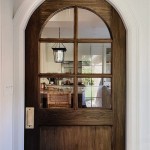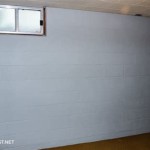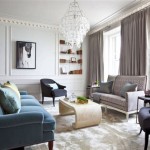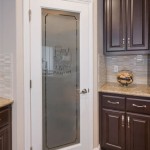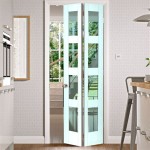Words To Describe Texture In Interior Designing Terms
Texture, in the realm of interior design, refers to the tactile and visual quality of a surface. It is a critical element that contributes significantly to the overall aesthetic appeal and sensory experience of a space. By carefully selecting and combining textures, designers can create depth, interest, and a sense of harmony within a room. Understanding and accurately describing texture is paramount for effective communication between designers, clients, and tradespeople. A well-articulated understanding allows for precise material selection and proper execution of design concepts.
Texture is often categorized into two primary types: visual and tactile. Visual texture refers to the perceived surface quality based on how light interacts with it. It's what the eye sees. Tactile texture, on the other hand, is the actual feel of a surface when touched. While visual textures can create an illusion of depth and interest, tactile textures offer a tangible sensory experience. The interplay between these two types of texture is what makes interior design so rich and engaging. The ability to effectively use descriptive words to convey these textures is crucial for successful project outcomes.
Descriptive Words for Visual Texture
When describing visual texture, the focus is on how light reflects off the surface and creates the illusion of depth and pattern. These descriptions often relate to the perceived smoothness, roughness, or reflectivity of the material.
Smooth: This indicates a surface that appears even and uninterrupted, reflecting light uniformly. Words associated with smooth include sleek, polished, glossy, refined, and streamlined. A smooth surface, like a polished marble floor or a lacquered cabinet, can create a sense of elegance and spaciousness.
Rough: This describes a surface that appears uneven and irregular, scattering light and creating shadows. Words associated with rough include coarse, rugged, uneven, granular, and textured. A rough surface, like a brick wall or a heavily textured paint finish, can add character and a sense of earthiness to a space.
Matte: A matte finish absorbs light rather than reflecting it, resulting in a non-reflective surface. Words related to matte include flat, subdued, velvety, and non-glossy. Matte finishes are often used on walls to minimize glare and create a calming atmosphere.
Glossy: A glossy finish reflects light strongly, creating a shiny and reflective surface. Words related to glossy include shiny, lustrous, polished, and reflective. Glossy surfaces are often used to highlight architectural details or add a touch of glamour to a space.
Patterned: This refers to surfaces with repeating designs or motifs that create visual interest. Words related to patterned include geometric, floral, abstract, and organic. Patterned wallpapers, fabrics, or tiles can add personality and visual complexity to a room.
Iridescent: This describes surfaces that display a range of colors depending on the angle of light. Words related to iridescent include shimmering, opalescent, pearlescent, and luminous. Iridescent finishes can add a subtle and sophisticated touch to decorative elements.
Distressed: This indicates a surface that has been intentionally aged or worn to create a vintage or rustic look. Words related to distressed include weathered, aged, worn, antiqued, and rustic. Distressed furniture or finishes can add character and a sense of history to a space.
Descriptive Words for Tactile Texture
Tactile texture describes the actual feel of a surface when touched. These descriptions relate to the physical characteristics of the material, such as its smoothness, roughness, softness, or hardness.
Soft: This describes a surface that is yielding and comfortable to the touch. Words associated with soft include plush, velvety, fluffy, cushioned, and downy. Soft textures, like a plush rug or a velvet sofa, can create a sense of comfort and relaxation.
Hard: This describes a surface that is firm and unyielding to the touch. Words associated with hard include rigid, solid, firm, unyielding, and dense. Hard textures, like a stone countertop or a metal chair, can add a sense of stability and durability to a space.
Smooth: As with visual texture, smooth can also apply to tactile qualities. In this context, it means the surface feels even and frictionless. Terms like sleek, polished, and refined are still applicable. A smooth surface, such as a polished wood table, provides a comfortable and pleasant tactile experience.
Rough: A rough tactile texture feels uneven and abrasive to the touch. Words related to rough include coarse, scratchy, bumpy, and uneven. A rough surface, such as a jute rug, provides a more stimulating tactile sensation.
Warm: This describes a surface that feels thermally warm to the touch. Words related to warm include cozy, inviting, and comfortable. Wood and natural fibers often have a warm tactile quality.
Cool: This describes a surface that feels thermally cool to the touch. Words related to cool include refreshing, crisp, and clean. Metal and stone often have a cool tactile quality.
Sticky: Describing a surface that tends to adhere to the touch, often requiring some force to detach. Words related to sticky include tacky, adhesive, and clinging. This is generally undesirable in interior design but might be descriptive in certain circumstances or with specific materials.
Gooey: Similar to sticky, but implies a more liquid or semi-liquid consistency that adheres to the touch. Words related to gooey include viscous, mushy, and slimy. Generally undesirable for most surfaces in interior design.
Advanced Texture Descriptors and Considerations
Beyond the basic descriptors, a more nuanced understanding of texture requires the use of more specific and descriptive terms. The effectiveness of a texture also depends on its interaction with other elements in the space, such as color and lighting.
Knitted: Describes a texture created by interlacing yarn or thread in a looped pattern. Words related to knitted include woven, braided, and intertwined. Knitted textures often provide visual and tactile warmth.
Woven: Similar to knitted, but typically refers to a tighter and more structured interlacing of fibers. Words related to woven include interlaced, plaited, and twilled. Woven textures are frequently found in fabrics and baskets.
Embossed: Describes a surface with a raised pattern or design. Words related to embossed include raised, sculpted, and engraved. Embossed textures add depth and visual interest.
Flocked: Describes a surface covered with short fibers that create a soft, velvety texture. Words related to flocked include velvety, plush, and napped. Flocked surfaces are often used for decorative accents.
Porous: Describes a surface with small holes or openings. Words related to porous include absorbent, permeable, and sponge-like. Porous materials, such as sponges or certain types of stone, can have a textured feel due to their uneven surface.
Scaly: Describes a surface that is covered in overlapping plates or segments, reminiscent of fish scales or reptile skin. Words related to scaly include imbricated, laminated, and flaky. Scaly textures can add a unique and exotic touch to a space.
Textural Contrast: The effective use of texture often relies on creating contrast between different surfaces. Combining smooth and rough textures, or hard and soft textures, can create visual and tactile interest. For example, pairing a smooth glass tabletop with a rough-hewn wooden base creates a striking textural contrast.
Lighting and Texture: The way light interacts with a textured surface can significantly impact its appearance. Strong lighting can accentuate the depth and irregularities of a rough texture, while diffused lighting can soften the appearance of a smooth texture. Understanding how lighting affects texture is crucial for creating the desired mood and atmosphere in a space.
Color and Texture: Color can also influence the perception of texture. Dark colors tend to enhance texture by creating more pronounced shadows, while light colors tend to minimize texture by reflecting more light. Using color strategically can help to highlight or subdue the textural qualities of a surface.
The careful selection and description of texture are essential skills for any interior designer. By using precise and descriptive language, designers can effectively communicate their vision and create spaces that are both visually appealing and sensually engaging.

Top Interior Design Terms To Know Dictionary

Artlandia Glossary Of Pattern Design

Design Styles Defined Putting Your Style Into Words Rebecca Ward

The Seven Elements Of Interior Design Texture

The Complete Guide To Add Textures In Interior Design Alcove Studio

Interior Design Glossary 47 Terms With Examples And Academy

22 Popular Interior Design Term Used By Expert Designers Beautiful Homes

Interior Design Glossary 47 Terms With Examples And Academy

How To Use Texture Colour The Interior Editor

Interior Design Glossary 47 Terms With Examples And Academy
Related Posts


